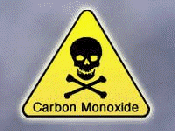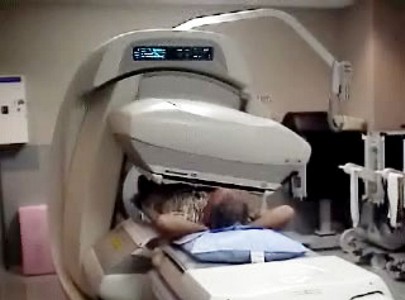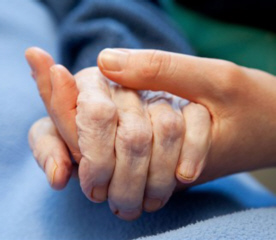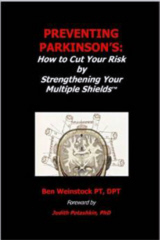.gif) VIARTIS � |
||||||||||
|
PARKINSON'S DISEASE |
||||||||||
| � � |
||||||||||
|
� � � � |
PARKINSON'S DISEASE NEWS � |
� � � � � � � � � � � � � � � |
||||||||
|
MAY 2015 � 30th May� 2015 - New research CARBON MONOXIDE GREATLY INCREASES THE RISK OF PARKINSON'S DISEASE
Carbon monoxide poisoning has been found to be able to greatly increase the risk of Parkinson's Disease. Common sources of carbon monoxide include cigarette smoke, gas cookers, gas fires, vehicle exhaust, gasoline-powered tools. For more information go to Carbon monoxide
The risk of Parkinson's Disease increased a lot in those people suffering carbon monoxide intoxication. The significance was increased in young people. Therefore, in some people, carbon monoxide intoxication can be a serious factor leading to Parkinson's Disease. Reference : Medicine (Baltimore) [2015] 94 (19) : 1-6 (C.Y. Lai, M.C.Chou, C.L.Lin, C.H.Kao) Complete abstract� In order to refer to this article on its own click here � 26th May 2015 - New research SWEDD IN PEOPLE WITH PARKINSON'S DISEASE
Parkinson's Disease can usually be diagnosed conclusively using scanning methods such as the SPECT scan and the PET scan. The term SWEDD (scans without evidence for dopaminergic deficit) refers somebody initially being assumed to have Parkinson's Disease but whose scan shows the absence of any dopamine deficiency or imaging abnormality that would diagnose them as actually having Parkinson's Disease. For more information go to : SWEDD While many authors have suggested that medical disorders similar to Parkinson's Disease may account for a proportion of SWEDD cases, others claim that some of them may have a benign subtype of Parkinson's Disease.
Reference : Journal of Neurology, Neurosurgery and Psychiatry [2015] May 19 [Epub ahead of print] (R.Erro, S.A.Schneider, N.P.Quinn, K.P.Bhatia) Complete abstract �In order to refer to this article on its own click here � 21st May 2015 - New research THE PLACE OF DEATH IN PARKINSON'S DISEASE
Most people prefer to receive end-of-life care in familiar surroundings rather than in hospital. This study examined the variation in the place of death for people dying from Parkinson's disease in European and non-European countries. They used death certificates for deaths with Parkinson's Disease as an underlying cause.
In several countries a substantial proportion of deaths from Parkinson's Disease occurs in hospitals, although this may not be the most optimal place of terminal care and death. The wide variation between countries in the proportion of deaths from Parkinson's Disease occurring in hospital indicates a potential for many countries to reduce these proportions. Reference : BMC Palliative Care [2015] 14 (1) : 28 . [Epub ahead of print] (K.Moens, D.Houttekier, L.Van den Block, R.Harding, L.Morin, S.Marchetti, A.Csikos, M.Loucka, W.A.Naylor, D.M.Wilson, J.Teno, M.Cardenas-Turanzas, Y.Rhee, F.J.Garcia-Leon, L. Deliens, J.Cohen) Complete abstract �In order to refer to this article on its own click here � 10th May 2015 - New book PREVENTING PARKINSON'S : HOW TO CUT YOUR RISK BY STRENGTHENING YOUR MULTIPLE S�� HOW TO CUT YOUR RISK BY STRENGTHENING YOUR MULTIPLE SHIELDSTIPLE SHIEL Ben Weinstock
�
��
|
||||||||||
| � | ||||||||||
.gif) |
||||||||||
| � | ||||||||||
| �2006-2015 Viartis | ||||||||||
| � | ||||||||||
| [email protected]� | ||||||||||



 Publisher's
description : Preventing Parkinson's is the only book available that gives
readers proactive lifestyle recommendations for optimizing health and lowering
the risk of developing Parkinson�s Disease. With over 1,000 references, this
extraordinary, groundbreaking work provides cutting-edge, evidence-based
research. It is a comprehensive compilation that will benefit both lay people
and medical professionals alike. Dr. Weinstock thoroughly evaluates how the
synergy of diet, exercise, sleep, stress management, avoidance of toxins,
prevention of head injuries, and proper medical care can reduce one�s chance of
developing Parkinson�s Disease.
Publisher's
description : Preventing Parkinson's is the only book available that gives
readers proactive lifestyle recommendations for optimizing health and lowering
the risk of developing Parkinson�s Disease. With over 1,000 references, this
extraordinary, groundbreaking work provides cutting-edge, evidence-based
research. It is a comprehensive compilation that will benefit both lay people
and medical professionals alike. Dr. Weinstock thoroughly evaluates how the
synergy of diet, exercise, sleep, stress management, avoidance of toxins,
prevention of head injuries, and proper medical care can reduce one�s chance of
developing Parkinson�s Disease.